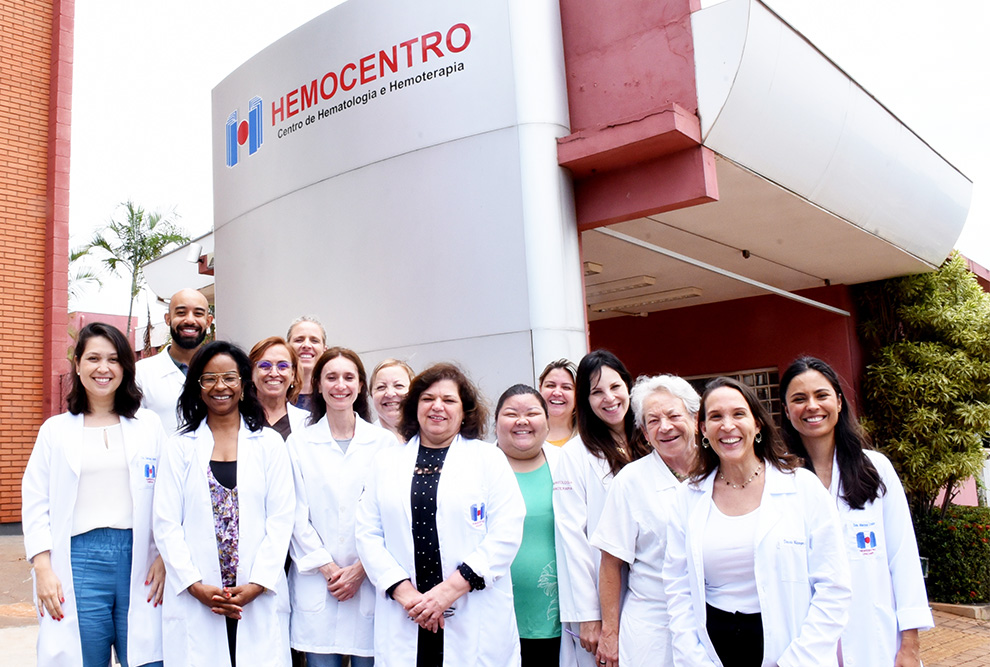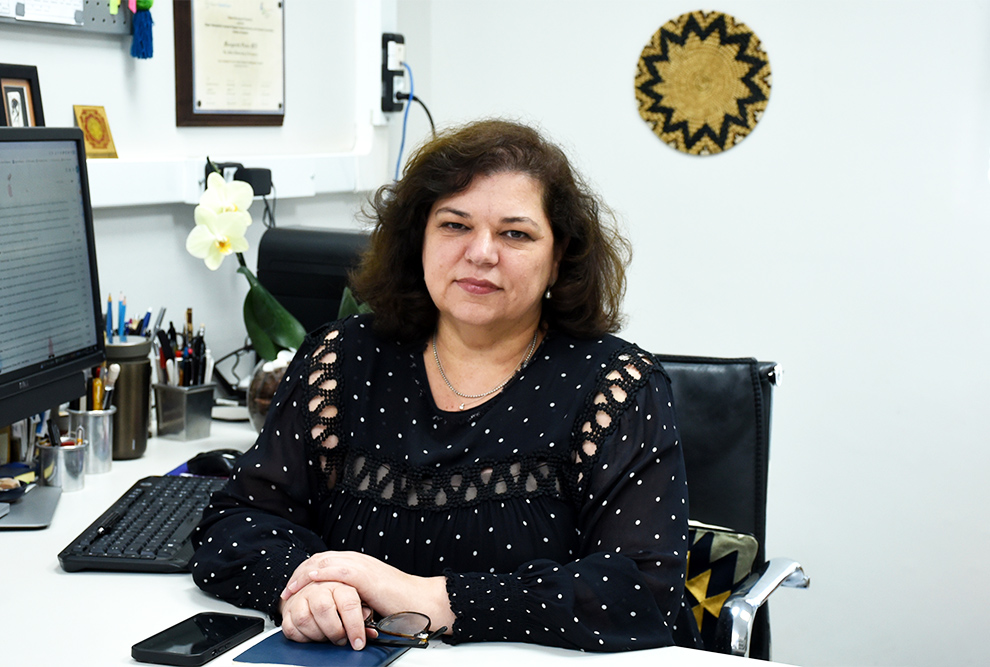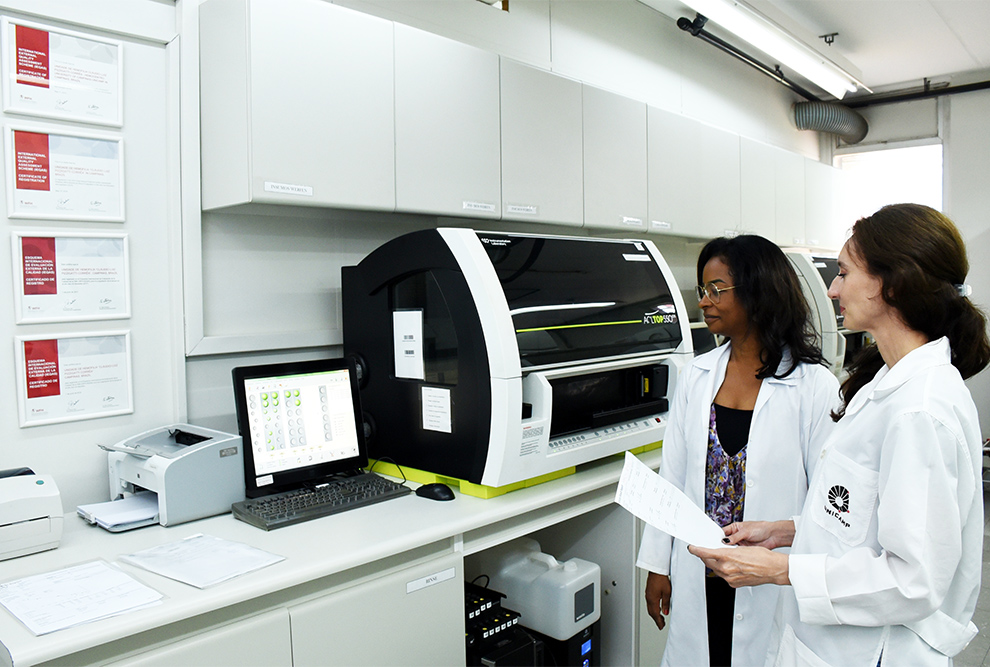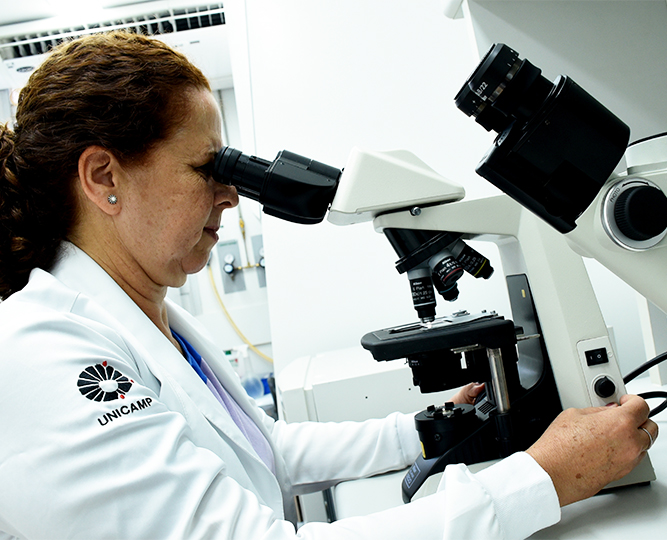
Gene therapy can be understood as a technique that consists of introducing genetic material into patient cells in order to make these cells gain a new function, such as producing a protein, making them block a certain activity or even make them correct a deficient action. In Campinas, the Unicamp Blood Center is a world reference in the use of gene therapy to treat people with hemophilia.
Hemophilia, a hereditary bleeding disease, has always been an attractive field for testing gene therapy. At Unicamp, the first studies in this area took place in the late 90s, in collaboration with hematologist Valder Arruda, following a post-doctoral internship he carried out at the University of Pennsylvania (United States). At the time, three Brazilian patients with hemophilia traveled to the country to receive treatment, returning to Brazil to continue monitoring at Unicamp.
The coordinator of the Hemocentro and professor at the Department of Clinical Medicine (DCM) of the Faculty of Medical Sciences (FCM) at Unicamp, Sara Teresinha Olalla Saad, says that since that time the Hemocentro has started to invest in research in the area of gene therapy, believing in potential of this treatment to combat genetic diseases. “We have been working in this area for almost three decades. Still in the 1990s, we carried out the first studies and preliminary trials, invested in infrastructure and human resources and had our first patient treated with this therapy.”
In the Hemocentro's trajectory in the field of gene therapy, Saad cites researchers from Unicamp who worked to advance research within the University, with the consequent expansion of the center's physical facilities. Among them: Fernando Costa and Cármino Antônio de Souza. She also highlights that, currently, thanks to the work carried out by fellow DCM professor Margareth Castro Ozelo, the Hemocentro is among the best research centers in the world in this area.
“We are internationally recognized as a reference center for gene therapy for hemophilia. In addition to publishing in high-impact journals, we offer courses to doctors from other countries interested in the therapeutic protocol, interested in learning about our service and understanding the treatment and monitoring strategies for hemophiliac patients,” he says.

At the forefront of research involving gene therapy in the treatment of hemophilia since 1998, Ozelo highlights the advances made in the treatment of the disease in recent decades. She says that for a long time, patients with hemophilia depended on constant blood transfusions. Disease therapy then evolved towards the use of factors derived from human plasma. Soon after, he started using recombinant factors, that is, manufactured in the laboratory. More recently, there are several strategies, including the use of monoclonal antibodies and other molecules.
In the case of patients with hemophilia, gene therapy emerges as an alternative to traditional therapy, which consists of the intravenous administration of factors VIII (hemophilia A) or IX (hemophilia B), proteins that are part of the blood clotting process. In gene therapy, instead of receiving the administration of these factors, patients receive, through an intravenous infusion, vectors containing genetic material, a DNA sequence, which goes into a target cell that will begin to express the desired proteins. In the case of hemophilia, liver cells are the target that receives genetic material through a viral vector, the associated adenovirus (AAV). These cells then begin to express factor VIII or factor IX.
In 2019, Unicamp's Blood Center received authorization to begin treating patients with gene therapy. Since then, the unit has been part of five large studies in the world in this area, having infused the therapy in 38 patients. “By far, it is the center that has made the most use of this technique in the world,” says Ozelo.
In Brazil alone, there are more than 13 thousand patients with hemophilia, who receive the factor concentrate through the Unified Health System (SUS), free of charge. For Ozelo, the use of gene therapy on a larger scale, in addition to offering better benefits to patients, has the potential to reduce treatment costs over the years, since the majority of patients who received it did not require other therapies, in case of many of them for more than four years.
“Being able to treat this population of patients, which is well controlled, will also give us the possibility of developing more knowledge in the area of gene therapy, with a view to using it in the treatment of other rare congenital diseases and even those that are not hereditary”, he argues.

Also according to the FCM professor, all patients with hemophilia treated with gene therapy at the Hemocentro are classified as severe – that is, they did not produce factors VIII or IX and they suffered a lot of bleeding. Today, most of them have mild levels of the disease, or even no sign of it, although there is a wide variation in response. In some cases, there was a decrease or even a loss of much of the expression.
“Since 2019, we have been following patients who, after a single infusion of gene therapy, never again needed to receive any other type of additional treatment, even if they presented a transient or insignificant response”, comments the researcher when talking about the challenges that still exist. in the treatment of hemophilia.
According to the researcher, in the case of patients with hemophilia A – most prevalent in the population – researchers observe that, although many have shown a great initial response to therapy, they begin to suffer a drop in the expression of factor VIII. The same does not happen with patients with hemophilia B, in whom the tendency is for the response in the form of factor IX expression to persist after infusion.
“What we have observed in all treatment protocols is that it is not yet possible to predict the patient's response to gene therapy, so some respond very well to treatment, while others do not show such an adequate response. Part of the scientific community's efforts today is to discover the elements that determine which patients will have a good response to treatment and which will not”, concludes Ozelo. The results of these research have been published in the main international journals focused on this topic, including The New England Journal of Medicine, Experimental Biology and Medicine and the Journal of Thrombosis and Haemostasis.


